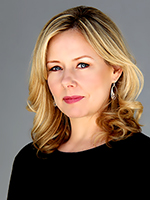(Originally posted at USC Global.)
By Susan L. Wampler

USC students and faculty join peers from around the world in an online simulation to build consensus on global warming and climate change challenges. (Photo/iStock)
Jessica Santos was full of optimism heading into mock negotiations at the APRU Student Global Climate Change Simulation. The USC Master of Public Health candidate quickly discovered it was going to be more challenging than she anticipated — much like it is in the real world.
Santos and 120 students from 13 universities in 10 countries participated in the recent simulation, led by Mellissa Withers, PhD, MHS, associate professor of population and public health sciences at the Keck School, and hosted in partnership with the Association of Pacific Rim Universities (APRU), of which USC is a founding member. More than 16 international speakers, including a Maori rights leader, and 24 facilitators took part in the three-day event.
“This simulation is a consequence-free experience that really cements in the minds of students all around the world that climate change is no joke,” said Santos, a progressive degree student who is earning a BS in Chemical Engineering at the USC Viterbi School of Engineering while pursuing her MPH. “The experience revealed the importance of global collaboration and transparency to ensure sustainable, equitable and inclusive progress towards global climate resiliency.”
The program was so popular — more than 400 students applied for 10 seats in Peking University — Withers plans to offer it twice next year.
“This is a global, shared problem, and we need involvement from the private and public sectors, and nonprofits and nongovernmental organizations in all countries to solve the crisis,” said Withers, who is director of the APRU Global Health Program. “The experiential learning opportunity really drives the message home much more than reading about it in a textbook or writing a paper.”
Next-generation approach
Students had two weeks to study the relevant issues and get to know their teammates before the event’s kickoff and the mock negotiations. Teams took part in three rounds of negotiations, each guided by an expert facilitator, on subjects such as deforestation, clean technologies, carbon trading and offsets, ocean health and population control. Topics were addressed from such perspectives as developing nations and public health.
Speakers included Maori rights leader Rhys Jones, a public health physician and University of Auckland senior lecturer in Māori health, who spoke on the climate-related challenges faced by indigenous peoples.
Tracy Nilsson, senior director of the Global Environmental Program for Adidas, spoke about the company’s efforts to lower emissions by creating greener, more sustainable manufacturing processes.
In addition to USC and the University of Oregon, the simulation’s partners included Monash University and The University of Melbourne in Australia, Peking University in China, The Chinese University of Hong Kong, Universidad San Francisco De Quito in Ecuador, Tohoku University in Japan, Universiti Malaya in Malaysia, Tecnológico de Monterrey in Mexico, The University of Auckland in New Zealand, Nanyang Technological University in Singapore and the University of Washington.
University-wide collaboration
Withers cites two sources of inspiration for organizing the simulation: The initial spark came from Shannon Gibson, assistant professor of International Relations and Environmental Studies at the USC Dornsife College of Letters, Arts and Sciences, whose courses feature interactive model UN simulations derived from actual climate negotiations.
The lack of international cooperation essential to mitigating global warming also pushed Withers to expand the simulation beyond USC to include students from across the Asia-Pacific.
“Climate change is a big topic around the world, and it’s the next generation that’s going to have to solve it and solve it pretty quickly,” Withers said. “They’re going to need global communication, cross-cultural collaboration and teamwork skills in their future careers.”
Gibson brought her expertise to event by role-playing the UN executive secretary for climate change. Monalisa Chatterjee, USC Dornsife assistant professor of environmental studies who is from Delhi, India, served as a facilitator for the students representing that nation in the climate negotiations.
Taking action
No matter what strategies are used to combat climate change, “the biggest thing that could really help is collaboration” between the public and private sectors, noted USC participant Jordan Tomlinson.
“We’re going to need to be more ambitious in our initiatives to be able to achieve a safe level of climate change,” Santos said. “We need to consider as many perspectives as possible and leave no stone unturned.”
Santos and Tomlinson both want to continue being part of the solution as they launch their careers.
Santos plans to pursue a law degree and a master’s in public policy with the goal of practicing environmental law. Tomlinson initially had plans to become a brain surgeon, but recently decided to pursue his MPH at USC.
“Those professionals are important, but I decided for me, personally, instead of helping one person at a time, I could help a group of people,” Tomlinson said. “That’s what led me to public health.”
Withers finds the students who took part in the APRU simulation as inspirational as they found the event’s speakers and facilitators.
“We hear a lot of doomsday talk around climate change, and it’s created this apathy. A lot of people think it’s too late and there’s nothing that we can do, so they don’t want to hear about it because they find it depressing,” Withers said. “But it isn’t too late. There is still time and, through APRU, USC and our partnering universities, we’ll have a whole new generation of people offering concrete solutions.”
Learn more about APRU and USC’s Department of Population and Public Health Sciences today.

